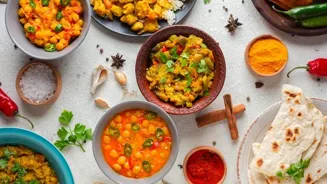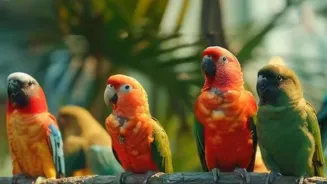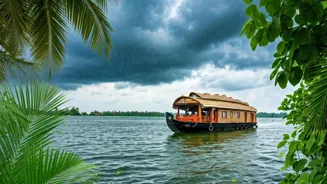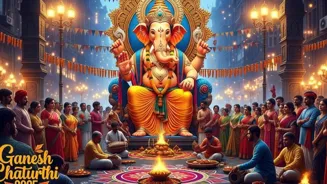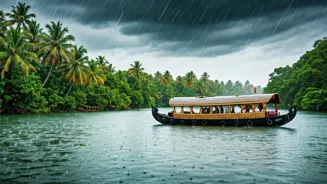Dive into the Enchanting Realm of Classical Indian Dance: Explore 7 Captivating Forms. Discover the rich heritage and artistry!
India, a land of vibrant culture and rich traditions, boasts a mesmerizing
array of classical dance forms. These dances are not just about rhythmic movements; they are narratives woven through gestures, expressions, and music, deeply rooted in ancient scriptures and mythology.
Exploring these art forms offers a fascinating glimpse into India's heritage and its artistic soul. Come, let's embark on a journey to discover seven of these captivating dance styles.
Bharatnatyam: Classical dance from Tamil Nadu tells Hindu mythological stories, with international recognition
Bharatnatyam, originating from Tamil Nadu, is perhaps the most well-known classical dance form. Characterized by its precise footwork, graceful hand gestures (mudras), and expressive facial expressions (abhinaya), Bharatnatyam tells stories from Hindu mythology.
The dancers, adorned in brightly colored silk sarees and intricate jewelry, create a spectacle of beauty and devotion. One can witness performances that celebrate the gods, narrate epics, or explore themes of love and philosophy; hence, it remains a cornerstone in Indian classical traditions.
Over the years, it has garnered international recognition, and its impact on world dance is undoubtedly quite significant. Several academies today around India train aspiring dancers across all age groups.
Kathak dance: traditional storytelling through movement, blending Hindu and Muslim influences
Kathak, hailing from North India, is renowned for its intricate footwork, rapid spins (chakkars), and storytelling through mime and gestures. The word 'Kathak' is derived from 'katha,' meaning story, and Kathak dancers are essentially storytellers.
This dance form evolved from nomadic bards who would travel and narrate tales from epics using music and dance. Under the Mughal influence, Kathak transformed, incorporating elements of Persian art and culture, resulting in a unique blend of Hindu and Muslim traditions.
The focus shifted to elegance and finesse, emphasizing rhythmic patterns and improvisation. Today, Kathak remains a vibrant and dynamic dance form, captivating audiences with its grace and technical brilliance.
Kathakali dance-drama from Kerala: elaborate costumes, makeup, storytelling of Hindu epics
Kathakali, from Kerala, is a dramatic dance-drama, known for its elaborate costumes, vibrant makeup, and powerful storytelling. Dancers, all traditionally male, transform into mythological characters, enacting stories from the Ramayana, Mahabharata, and other Hindu epics.
The makeup is incredibly detailed, using natural pigments to create distinct character types. Each color represents a specific trait: green for noble characters, red for evil ones, and so on.
Kathakali performances are lengthy, often lasting for hours, and require immense physical and mental endurance from the dancers. The intricate hand gestures, facial expressions, and body movements convey the stories with remarkable clarity and vigor.
It is a complete art form that engrosses the audience in a world of gods, demons, and epic battles.
Manipuri dance: graceful, devotional, unique costumes, Radha-Krishna love story, serene harmony
Manipuri, originating from Manipur, is characterized by its graceful and flowing movements, gentle rhythms, and devotional themes. Unlike other classical dance forms, Manipuri dancers do not wear ankle bells, creating a softer, more ethereal sound.
The costumes are also unique, with the female dancers wearing a distinctive barrel-shaped skirt called a 'Potloi.' Manipuri dance is deeply rooted in the Vaishnavite tradition, and most performances revolve around the love story of Radha and Krishna.
The dance form emphasizes serenity, devotion, and a sense of harmony between the dancers and the music. It is a visual treat that captivates with its simplicity and elegance. Often, the dance moves look natural, like waves of the ocean.
Odissi dance: graceful movements inspired by temple sculptures, depicting love stories of Lord Krishna
Odissi, from Odisha, is known for its lyrical movements, graceful postures, and sculpturesque poses. Inspired by the sculptures found in ancient temples of Odisha, Odissi dancers strive to recreate these poses in their movements.
The dance form emphasizes fluidity, sensuality, and a deep connection to nature. The dancers wear elaborate silver jewelry and traditional Odissi sarees, enhancing the beauty of the performance.
Odissi performances often depict stories of Lord Krishna and his consort Radha, showcasing their love and devotion. Over the years, Odissi has had a remarkable transformation, which came after India attained independence. This has made it one of the most sought-after classical dances today.
Kuchipudi: Energetic dance-drama from Andhra Pradesh, blending dance, drama, music, and tradition
Kuchipudi, originating from Andhra Pradesh, is a vibrant and energetic dance-drama, often performed in groups. It combines elements of dance, drama, and music, creating a lively and engaging spectacle.
Kuchipudi dancers frequently incorporate dialogues and songs into their performances, adding to the theatrical effect. The dance form is known for its fast-paced rhythms, intricate footwork, and acrobatic movements.
One unique aspect of Kuchipudi is the 'Tarangam', where the dancer balances on the rim of a brass plate while performing intricate steps. Kuchipudi is deeply rooted in religious tradition and continues to evolve today, appealing to wider audiences.
Sattriya: Assam's classical dance rooted in Vaishnavite tradition
Sattriya, from Assam, is a relatively newer classical dance form, recognized by the Sangeet Natak Akademi in 2000. It originated in the 'Sattras' (monasteries) of Assam and was initially performed exclusively by monks.
Sattriya dance is deeply rooted in the Vaishnavite tradition and primarily depicts stories of Lord Krishna. The dance form is characterized by its graceful movements, delicate hand gestures, and expressive facial expressions.
The music is an integral part of Sattriya dance, with traditional instruments such as the 'Khol' (a type of drum) and 'Taal' (cymbals) providing the rhythmic foundation. Sattriya is a unique and captivating dance form that offers a glimpse into the rich cultural heritage of Assam.
Explore India's diverse classical dance forms for a rich cultural experience
Exploring these seven classical dance forms provides a glimpse into India's artistic heritage. Each style boasts a unique charm, with stories interwoven into mesmerizing movements.
Whether it's the precise footwork of Bharatnatyam, the storytelling of Kathak, or the elaborate costumes of Kathakali, these dances offer a visual and emotional treat. So, immerse yourself in this mesmerizing world, and discover the beauty and depth of Indian classical dance.
With vibrant costumes, precise expressions, and intriguing stories, India's classical dances offer something for everyone. They are more than just entertainment; they are a way to connect with India's culture.
AI Generated Content. Glance/InMobi shall have no liability for the content

